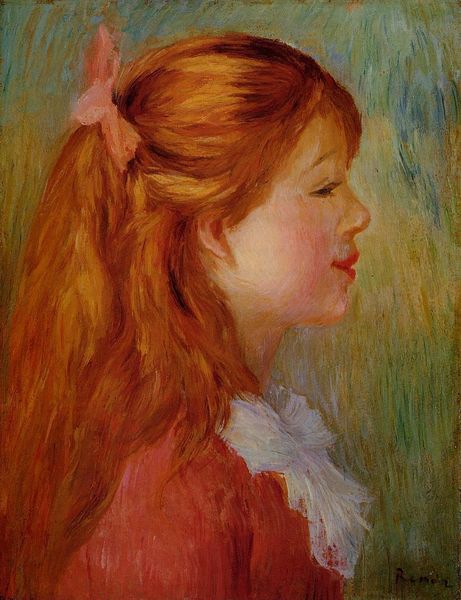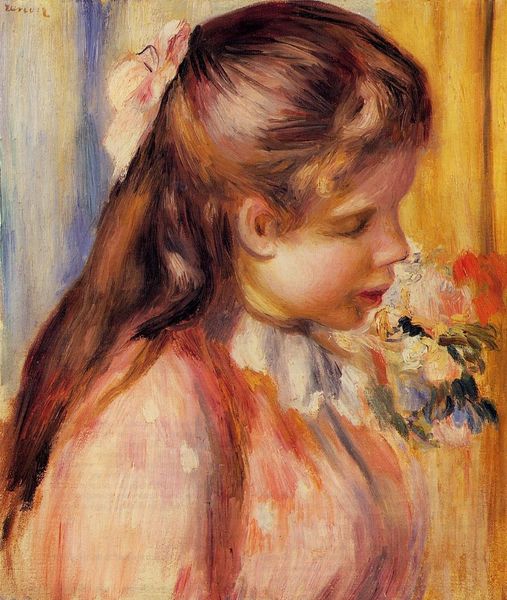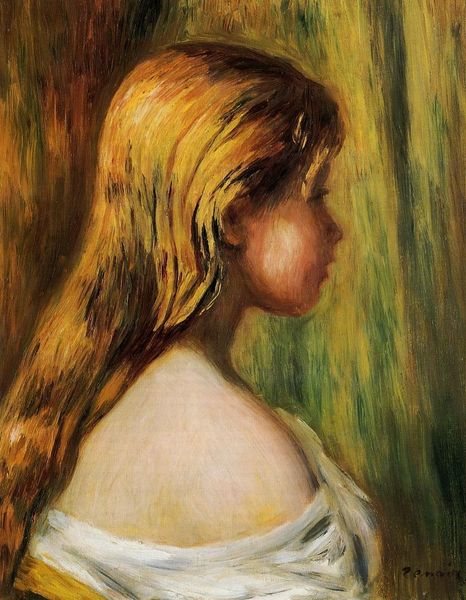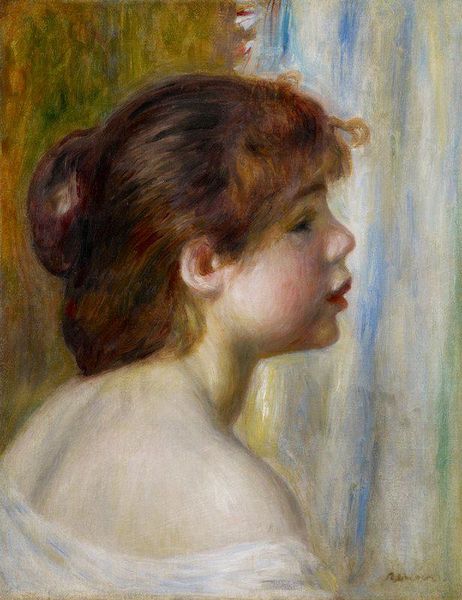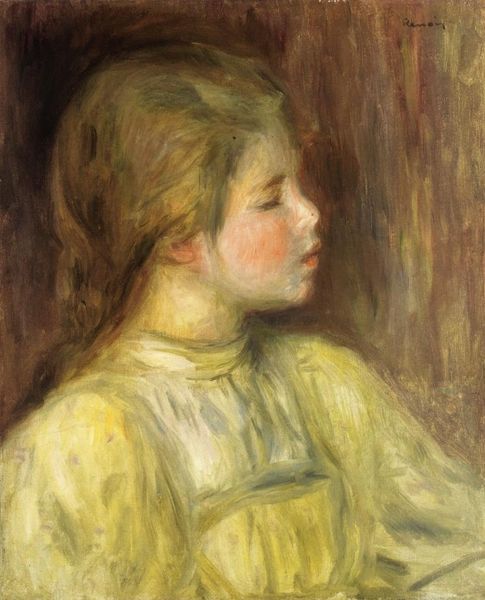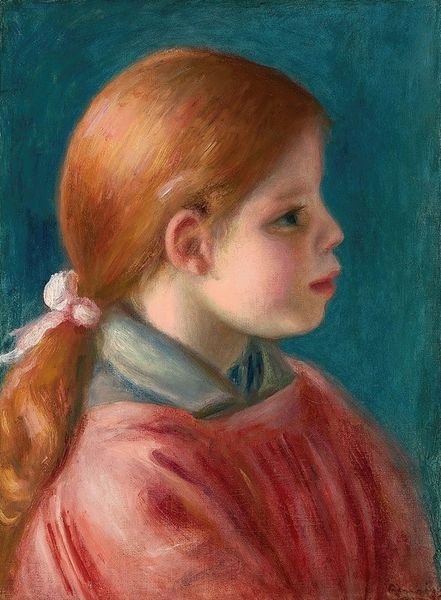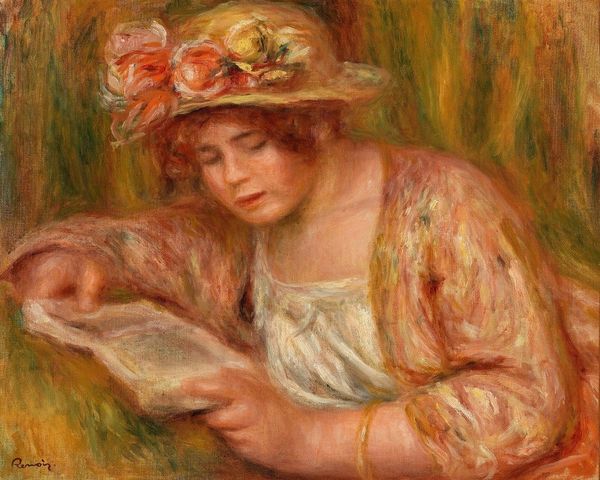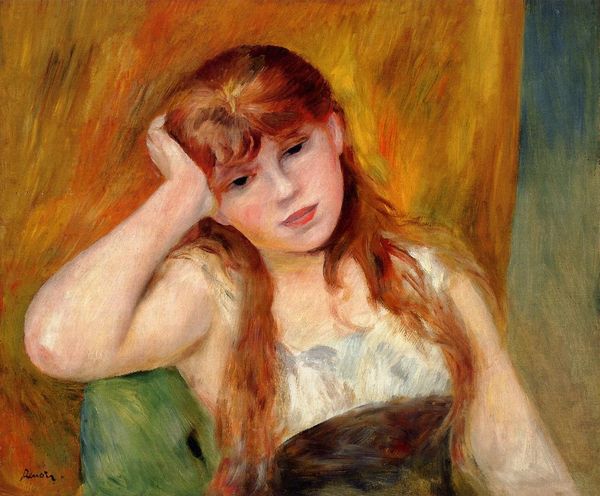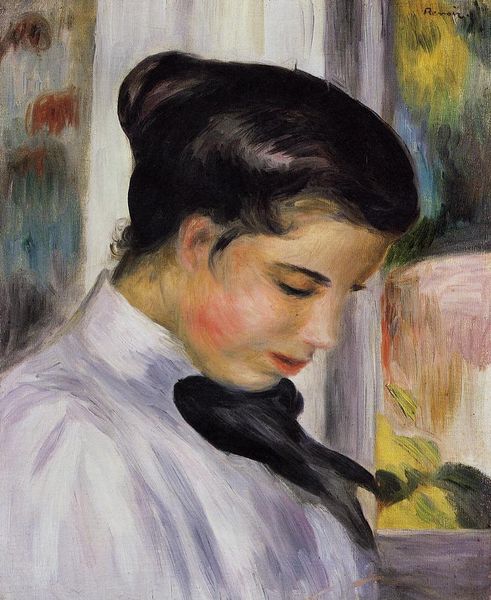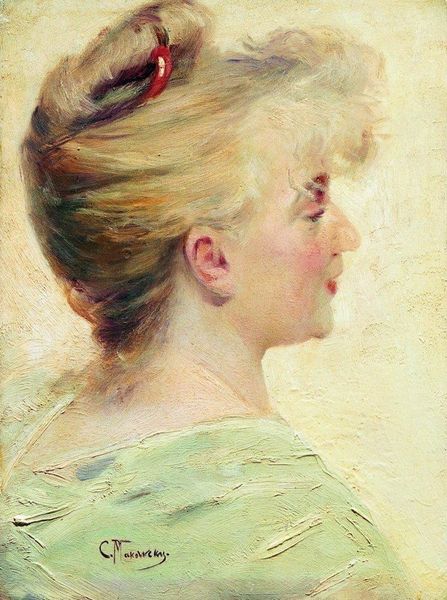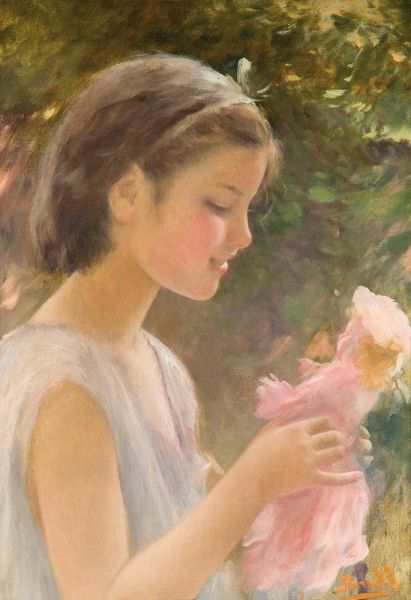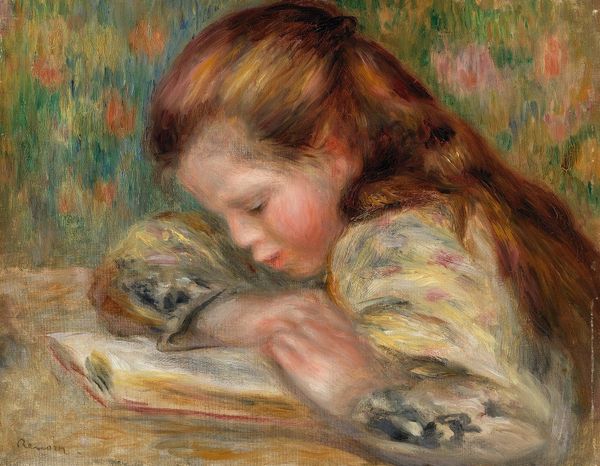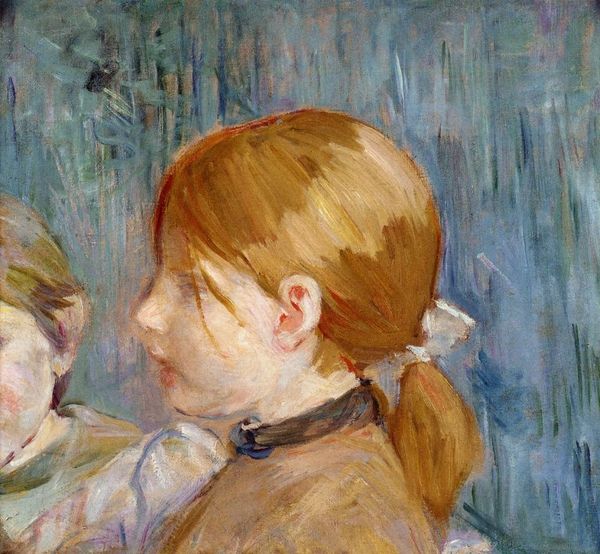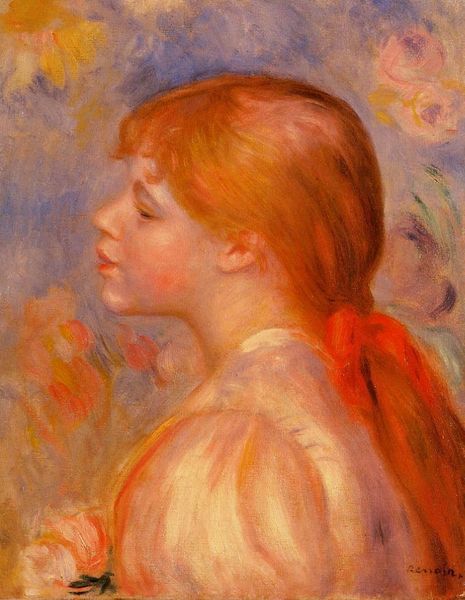
Copyright: Public Domain: Artvee
Curator: Pierre-Auguste Renoir's "Reading," painted around 1892, presents a serene profile of a young woman absorbed in her book. What's your first take? Editor: There's a definite tranquility. The hazy, dreamlike quality, typical of impressionism, makes it feel intimate. A very personal moment, sealed off from the outside world. Curator: I see it that way, too. But how does Renoir’s choice of subject—a young, probably bourgeois, woman engaging with text—play into late 19th-century concepts around female education and leisure? Was this freedom equally afforded to women across socioeconomic lines? Editor: That's an important point. It's easy to get swept away by the prettiness without acknowledging the privileged position it represents. The act of reading, a marker of status and education, emphasizes the gap between her opportunities and those of, say, working-class women. Curator: Exactly! We can consider it in the context of increased literacy among women and growing debates around women's intellectual capabilities. How does the imagery surrounding female literacy contribute to, or challenge, these narratives? And how does this piece perform relative to the institutional trends? Editor: And if we consider how paintings like this were consumed, displayed in bourgeois homes…they reinforced existing social structures. A gentle reminder of who gets to enjoy leisure, beauty, and intellectual pursuits. The setting is anonymous and doesn't betray the status and cultural location, doesn't it? Curator: Absolutely. Renoir's technique—the loose brushstrokes, the soft light—almost obscures those sharp class divisions. Editor: The softness definitely idealizes and romanticizes. It perhaps even depoliticizes. A lovely surface that can unintentionally conceal complicated truths. Curator: Well, it serves as a poignant reminder of how deeply intertwined art is with social and political realities. Editor: Indeed, revealing how artistic expression, even in seemingly simple scenes, always carries layers of historical meaning and implication.
Comments
No comments
Be the first to comment and join the conversation on the ultimate creative platform.
